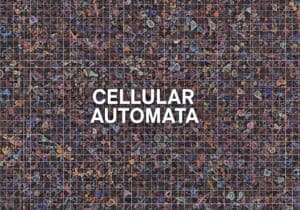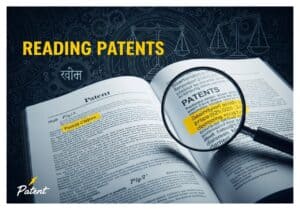Do not close any Design Phase without this. This extensive 设计审查 checklist is to be used at the end of the design phase of any product, to avoid potentially basic or stupid mistakes that may later be very costly or defeat the complete project, be dangerous or be devastating to the company’s image.
笔记: 6 tips on how to perform a good design review are included at the end of this post.
It is strongly recommended (and mandatory in some industries) to have a formal 设计审查 at the end of the Design Phase. Refer to our 相位门 article for details on this project model.
This review is ideally performed with experts of all concerned fields, but we also strongly suggest including engineers and designers who were NOT included in the design, to bring their fresh views.
Do challenge what seems obvious or “we always did like that before”
… condition, manufacturing, legal, or usage may have changed since your last review!
Many of the following items in the Design Review Checklist may be in your Specifications, to be later checked by your 验证 和 验证 (V&V) process … but maybe not. This list is trying to be as exhaustive as possible, but obviously not applicable and not complete for all domains and products.
UPDATE: for a more systematic and complete process, we now propose our original tool: the free 设计审查树 (“DRT”).
We are including versioning of the list so that you can update your files or process whenever this list is updated.
设计审查清单
version 1.08
 监管Yes it’s a must, but complex and continuously evolving | |
Does the product meet all applicable regulations? | Do you have the latest version of the standard? Of all forecasted countries? not only the head-office Also the standards in draft mode currently? Do you have a process in place to alert on evolving standards? |
Does the product have all the required labels? (in this design review checklist so as in the legal definition, “label” includes all markings, on the product, packaging, in any accompanying document) | Legal labeling of the product, including
… with all local marking or translation or approvals for all the intended marketS (and images and pictograms may save you a lot of translations here) Check our 塑料设计技巧集锦 article for plastic parts markings |
 Environmental, Robustness, and AgeingFrequently a tradeoff between quality, weight, and price … Advice: be very careful if averaging the use condition to some mean or average, aka “product is on average at 25°C”, or “product is used on average 2h a day” … some users may be continuously at one side of the scale while some others will be continuously at the other extremity, thus making you a correct average calculation, but all these products WILL fail prematurely. | |
| What is its IP code (Ingress Protection Code or Index)? | check IP code link for the IPXX table can the product be rotated upside voluntarily and then required a higher IP rate? and accidentally? |
| Will it stand weather corrosion conditions? | 96h or 100h (frequent values) salt mist test is frequently not enough for a product that can be close to the seaside (not even mentioning boat conditions) Is there any dissimilar pair of metals or alloys having different electrode potentials? Including frequently basic overlooked parts (screws, washers, springs …) Were cleaning chemical agents taken into account? Do you recommend some particular ones? Ex.: polycarbonates (PC), even at big thicknesses, in fact even faster at big thicknesses, if there is a local constraint, can crack within minutes if some solvent (MEK) is applied on its surface. |
| Does it withstand the cold? | Indicating minimal temp in the IFU may not be enough. Mind involuntary misuses. Batteries (based on chemistry, the cold always slows down its reactions) Have you done specific aging and cycle tests? Lubricants and sealings becoming harder and losing their performance and even blocking the moving mechanism (piston type) or lowering the flow/pressure (regulator) Many materials become brittle. Tested? |
| Does it withstand the heat? | A phone under the windshield of a car in the summertime will be exposed to much more heat than in Death Valley … Also, mind some concentrating/magnifier effect. Ex.: the mirrored windows of some elegant modern New York building with a concave shape was concentrating the sun on the nearby street ;) |
| Does it withstand UV and sun? | Related but not necessarily the same as temperature. Tested? |
| Does it withstand aging? | Related but not necessarily the same as temperature and UV Extremely tricky with some plastic and rubber material (Nitrile, EPDM …): it may come back literally to dust in 10-15 years even if well stored, with no constrain, and not exposed to sun or temperature. Or fail in 2-3 years if constraints or tight properties are needed. Does your product include some gluing? Have done some accelerated Ageing? Accelerating aging simulations, if not backup with normal aging, with too high temperature, or not appropriate Aging Factor (Q10) is valid only with history or reference. Plastic additives (color, UV resistance, filler …) can change properties a lot compared to a know reference. Mind dust or even more sand. Fine not perfectly sealed mechanisms will not survive 5 minutes on the beach. |
| Does it withstand a drop? | Even if no regulation, a quality product or costly product should withstand typical user misuse. Ex: for a displaceable good, dropping from the height of a table could be expected to be “normal”. While a breakage could be understood by the user for a cristal Champaign glass, maybe less and less for a slippery glass-coated thin phone. |
| Has MTBF (or another lifetime unit) been defined and evaluated? | See Mean Time Between Failures theory. |
You have read 34% of the article. The rest is for our community. Already a member? 登录
(同时也是为了保护我们的原创内容不被机器人搜刮)。
创新世界社区
登录或注册(100% 免费)
查看本文其余部分以及所有会员专享内容和工具。
只有真正的工程师、制造商、设计师和营销人员才是专业人士。
没有机器人,没有仇恨者,没有垃圾邮件发送者。
相关阅读与方法
- Heuristic Evaluation: Using established usability principles to systematically evaluate a design for potential usability issues.
- A/B Testing: Comparing two versions of a design to determine which performs better in terms of user engagement or other metrics.
- Wireframing: Developing wireframes to outline the structure and key elements of a design, facilitating early-stage review and iteration.
- Stakeholder Interviews: Engaging with stakeholders to understand their perspectives, requirements, and feedback on the design.
- Cognitive Walkthroughs: Simulating a user’s thought process to identify usability issues and areas for improvement in the design.
- Design Thinking Workshops: Collaborative sessions focused on creative problem-solving and iterative design improvements.
- Usability Testing: Observing real users as they interact with the design to identify pain points and areas for enhancement.
- Accessibility Audits: Reviewing the design to ensure it meets accessibility standards and is usable by individuals with disabilities.












emphase the importance of involving cross-disciplinary feedback early in the design phase, not just at the end
real-world usage insights can uncover issues that may not be apparent in theoretical reviews
will use it!
Is the checklists effectiveness compromised if regulations change significantly? What about IP considerations in different jurisdictions?
相关文章
45+ 游戏和营销的认知科学技巧:心理和参与度
45+ 个游戏和营销的认知科学技巧:心理和参与度
沸石最新出版物和专利
金属有机骨架(MOF)最新出版物和专利
共价有机骨架(COF)的最新出版物和专利
气凝胶和气凝胶石墨烯的最新出版物和专利